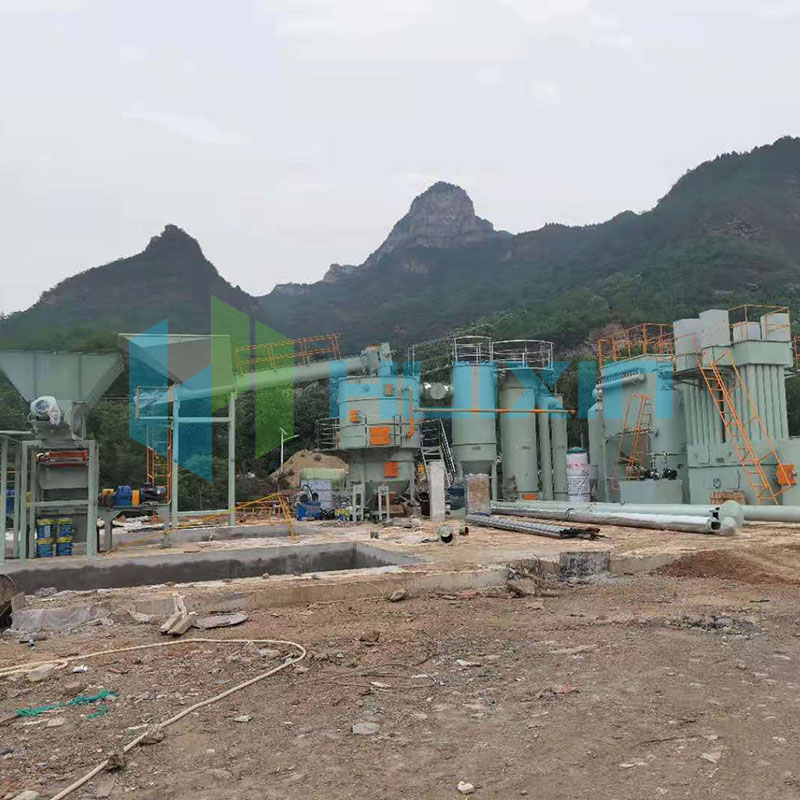 English
English Español
Español  Português
Português  русский
русский  Français
Français  日本語
日本語  Deutsch
Deutsch  tiếng Việt
tiếng Việt  Italiano
Italiano  Nederlands
Nederlands  ภาษาไทย
ภาษาไทย  Polski
Polski  한국어
한국어  Svenska
Svenska  magyar
magyar  Malay
Malay  বাংলা ভাষার
বাংলা ভাষার  Dansk
Dansk  Suomi
Suomi  हिन्दी
हिन्दी  Pilipino
Pilipino  Türkçe
Türkçe  Gaeilge
Gaeilge  العربية
العربية  Indonesia
Indonesia  Norsk
Norsk  تمل
تمل  český
český  ελληνικά
ελληνικά  український
український  Javanese
Javanese  فارسی
فارسی  தமிழ்
தமிழ்  తెలుగు
తెలుగు  नेपाली
नेपाली  Burmese
Burmese  български
български  ລາວ
ລາວ  Latine
Latine  Қазақша
Қазақша  Euskal
Euskal  Azərbaycan
Azərbaycan  Slovenský jazyk
Slovenský jazyk  Македонски
Македонски  Lietuvos
Lietuvos  Eesti Keel
Eesti Keel  Română
Română  Slovenski
Slovenski  मराठी
मराठी  Srpski језик
Srpski језик
What is the technology used in a 10T/D incinerator and how has it evolved over time?
2024-10-11

What is the working principle of a 10T/D incinerator?
The 10T/D incinerator burns waste at high temperatures using a combustion chamber and an afterburner. The waste is loaded into the primary combustion chamber, where it is burned at a temperature of about 800°C. The gases produced during combustion are then directed to the afterburner, where they are burned again at a temperature of about 1000°C. This process ensures that the waste is completely burned and produces minimal emissions.What are the types of waste that can be treated by a 10T/D incinerator?
A 10T/D incinerator is capable of treating various types of waste, including medical waste, industrial waste, municipal waste, and hazardous waste. However, the specific types of waste that can be treated depend on the design of the incinerator and the regulations of the local government.What are the environmental benefits of using a 10T/D incinerator?
A 10T/D incinerator has several environmental benefits, such as reducing the volume of waste, preventing the spread of diseases, and reducing greenhouse gas emissions. When the waste is burned, its volume is reduced by up to 90%, which minimizes the need for landfill space. Additionally, incineration destroys pathogens in medical and hazardous waste, making it safer for disposal. Finally, incineration produces less greenhouse gas emissions than landfilling because the combustion process is more efficient.What are the safety precautions when using a 10T/D incinerator?
It is important to follow strict safety protocols when operating a 10T/D incinerator. Protective clothing, such as gloves and masks, should be worn when handling waste and when operating the incinerator. The incinerator should also be regularly inspected and maintained to ensure that it is functioning properly. Finally, the emissions from the incinerator should be monitored to ensure that they meet local regulations.In conclusion, a 10T/D incinerator is an important waste treatment equipment that has evolved over time to become more effective and environmentally friendly. By burning waste at high temperatures, the incinerator reduces the volume of waste, prevents the spread of diseases, and reduces greenhouse gas emissions. Fujian Huixin Environmental Protection Technology Co., Ltd. is a manufacturer of high-quality incinerators, including 10T/D incinerators, that are used in various industries worldwide. For more information on our incinerators, please visit our website at https://www.incineratorsupplier.com or contact us at hxincinerator@foxmail.com.
References:
- Chen, J., Liu, X., & Zhao, Y. (2018). Study on the Treatment and Disposal of Solid Waste by Incineration. Energy Procedia, 152, 241-252.
- Yang, J., Gao, M., & Wang, X. (2019). Experimental study on co-combustion of biomass and solid waste in a waste-to-energy incinerator. Journal of Cleaner Production, 220, 146-153.
- Zhang, S., Liao, X., & Cen, K. (2020). Influence of waste feedstock and operation mode on the performance of a large-scale industrial waste incinerator. Journal of Environmental Management, 273, 111175.
- Zheng, X., Liang, J., & Huang, Y. (2018). Numerical simulation and experimental validation of municipal solid waste incineration by physical and chemical kinetics. Waste Management, 77, 436-449.
- Wu, S., Zhu, Y., & Cen, K. (2017). Comparison of real-time mass concentration measurement using PCS and traditional methods for fine particles in an incineration plant. Journal of Hazardous Materials, 329, 120-126.
- Wang, Q., Li, X., & Wei, L. (2019). Analysis of flue gas emissions dataset in a municipal solid waste incineration plant. Journal of Cleaner Production, 206, 555-565.
- Liu, J., Yan, J., & Chu, S. (2018). Review on the Comprehensive Disposal Feasibility of Municipal Solid Waste. Procedia Engineering, 205, 2477-2484.
- Zhang, H., Wu, Y., & Dong, W. (2019). Study on the Emission Characteristics of Incineration Gases from Medical Wastes. Energy Procedia, 158, 812-817.
- Li, Y., Wei, Q., & Wang, G. (2020). Design and experimental verification of a new waste-incineration type power generation. Journal of Cleaner Production, 263, 121539.
- Xu, Z., Wu, X., & Jiang, X. (2019). Study on the Influence of Flue Gas Recirculation on the Emissions Characteristics of Dioxins in Municipal Solid Waste Incineration. Energy Procedia, 158, 3351-3356.




